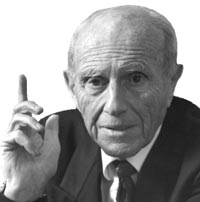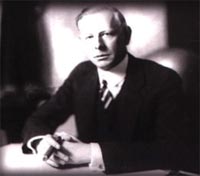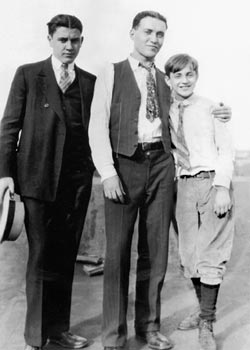Stock Market Crash Alert #4 : How to Buy Immediate Protection
Stock-Markets / Financial Crash Aug 30, 2007 - 11:49 AM GMTMartin Weiss writes: This is the fourth crash alert that I have sent you in recent weeks.
If you failed to act on my first , second and third alerts, it's water under the bridge. Just take advantage of market rallies like today's and focus on the protective steps you can take right now …
Step #1. Buy Hedges to Protect Your Portfolio From Potentially Devastating Losses
Millions of people buy property insurance to protect their home, car or business against unlikely physical disasters. But few people bother to buy protection against market disasters, which are more likely to happen and can be more damaging financially. Many don't even know it's possible.
I can understand why. Years ago, buying this kind of "Crash Protection" was very difficult. Today, it's very easy. You have three approaches:
1. The do-it-yourself approach: You can do it on your own, using mutual funds like the Rydex's Inverse S&P 500 fund, or by taking advantage of special ETFs like ProShares designed to go up in down markets.
Just make sure you research them thoroughly, invest prudently and time your purchases carefully. Reason: In rising markets, these investments will automatically fall in value.
2. The managed-account approach: Alternatively, if you prefer to relax, enjoy your retirement and let someone else do the heavy lifting, you can use SEC-registered professional managers that specialize in crashes and bear markets. Their goal is to help you …
- minimize your losses when the market is going up (much like a premium you'd pay for an insurance policy), and
- maximize your profits when the market is going down (like the benefit paid by a policy).
So when shopping for bear-market managers, two key questions to ask are:
- How much money did you make for your clients in the last bear market, net of all fees?
- What have you done to minimize their losses during the recent bull market?
Two programs to consider:
- Lang Asset's Short-Biased program, and
- Weiss Capital Management's Weiss Bear Strategy .
Both advisory firms also have other strategies available to provide a broad and balanced overall program.
3. The combined approach: Allocate some of your funds to hedge strategies you manage on your own and the balance to a manager. This way you can learn from the experience of your own trading, while also getting the benefit of professional management that's customized to your personal needs and goals.
But no matter which route you choose, be careful not to repeat the mistake so many investors made in the early 2000s, waiting until most of the damage was already done.
Your Second Urgent Step: Reduce Your Exposure to Market Declines
In a word, SELL, starting with the most vulnerable sectors.
But selling is not just a matter of calling your broker and saying "get me out."
If possible, you want to avoid selling at a time when everyone else is also selling. You also want to avoid selling the exceptional investments that will hold up the best now and soar the most soon thereafter.
But, more importantly, you don't want to wait until everyone — among your advisers and your family — finally agrees with you. By that time, it could be too late.
Not sure how to resolve this conflict? Then consider selling at least HALF of the investments you're concerned about.
Your Third Step: Move More of Your Money to Safety
Specifically, consider …
Treasury-only money market funds. Examples: American Century Capital Preservation Fund (CPFXX) , Dreyfus 100% U.S. Treasury Money Market Fund (DUSXX) , Fidelity U.S. Treasury Money Market Fund (FDLXX) or Weiss Treasury Only Money Fund (WEOXX) .
The Treasuries these funds own are guaranteed by the full faith and credit of the U.S. government. They're short term, protecting you against bond market declines. And after the sharp drop in yields we saw two weeks ago, their yields have now bounced back nicely.
There's one risk, however, that Treasury bills cannot protect you from: The danger of a falling dollar, which leads me to …
Investments that typically rise when the dollar falls. Examples: Foreign currency ETFs, options on foreign currencies, as well as mutual funds, ETFs or stocks that help you profit when foreign markets rise.
 |
| Martin D. Weiss with his father, J. Irving Weiss, in 1987. |
Your Fourth Step:
Turn Stock Market Declines into
Potentially Magnificent Wealth
Building Opportunities
My father was the master of bear markets.
He made a not-so-small fortune with his brother in the Crash of '29 … and then he did again, with me, in the Crash of '87.
Today, if he were still alive, he'd be nearly 100 years old.
He'd be telling us "I told you so" about the dazzling speed by which the mortgage meltdown has spread throughout America.
And he'd be reminding us that this period — the end of August and early September — is the anniversary of two major, but often-ignored, events in the history of the U.S. stock market: The Dow's peak preceding the Crash of '87 and the Dow's peak prior to the Crash of '29.
So I think the time is right to let him share his story with you — how he mastered those crashes, and how you can too. Here it is in his own words, based on his writings and manuscripts …
"How I Borrowed $500 from My Mother and Turned It Into $100,000 in the Great Bear Market of 1930-32"
by J. Irving Weiss (1908 - 1997)
 |
| J. Irving Weiss, a master of bear markets. |
Five years before the Crash of '29, I went to work on Wall Street as a typist at the age of 16. I made $25 a week, which was good money.
I knew very little about the stock market. But I found it so exciting that I went back four years later as a "customer's man" — a broker.
When the '29 crash hit, I was as surprised as everyone else by the utter fury of the decline. But my portfolio was clean. Neither I nor any of my clients had one share of stock.
My good fortune was due to a combination of skepticism and just plain poverty.
We had just seen a bust in real estate and even commodities. Yet, all around me, investors were going wild over stocks.
If people bought stocks with their own money, it might have been OK. But they were doing it on margin, with broker loans. These loans, which were normally around half a billion or a billion dollars, surged to a total of $8 billion. That was an ungodly sum, especially given that the entire Gross National Product was only a bit over $100 billion.
I figured: If so much real estate can sink so fast in value, why should Wall Street be any different? I couldn't understand the discrepancy. I wasn't about to risk my meager savings on something as uncertain as a surging stock market in the midst of deflation.
Looking back, I can see that escaping the crash was a critical event in my life. Had I been caught with some shares, no matter how few, I might have left the business in disgust. Instead I stuck around.
Then something very unusual happened.
I met a stock analyst from Japan, George Kato. His family had sent him to New York on a solemn mission — to learn everything he could about stock trading and take that knowledge back to Japan to build its infant securities industry.
Kato was like a big brother. He spent months teaching me his trading methods. Plus he taught me something else which turned out to be even more important:
You can make more money when stocks fall than you can make when stocks rise.
Kato showed me exactly how to do it, and it wasn't hard: Instead of buying low and then selling high, you just reverse the transaction. You borrow the stock and sell it. Then, you wait for it to go down and buy it back at lower prices. The more it goes down, the more money you make.
I also learned why it can be so immensely profitable: When stocks go down, they often do so very quickly. Years of market rises can be erased in days, even hours. And the faster the stocks decline, the faster you can pile up profits.
For example, one person I know went to his broker and borrowed 100 shares of Radio Corporation. Then he sold the borrowed stock for $100 per share, giving him a credit in his account of $10,000. The stock plunged to about $40, he bought it back for $4,000, and returned the 100 shares to his broker.
His profit: $6,000. Since he only put up a deposit of $1,000 for the borrowed stock, he multiplied his money six times.
This fascinated me. I wanted to learn more. So George Kato introduced me to the trading strategies of other great traders — men like Jesse Livermore, who made several fortunes trading the market (and lost several as well).
 |
| Jesse Livermore, who developed a strategy for "testing" the resistance and support in the stock market by targeting specific issues to buy or sell short in large quantities. |
Livermore often made so much money, he developed the ability to "test" the market before he committed himself heavily. If he wanted to buy a stock, he first started selling into the market.
If the stock price went down easily, he continued selling it, driving the price down still further until it could find support. If the price didn't go down, he concluded that there was good support for the stock at that level. That's when he figured it was safe to buy.
I didn't have the money to actually test the market. But I could usually tell, from the volume and the price action, when it was running into support or resistance.
 |
| From left to right: Irving Weiss, Al Weiss and Rubin Weiss, circa 1929 when the two older brothers borrowed $500 from their mother to short the stock market. |
I shared this new knowledge with my brothers, especially Al, who helped me throughout my career. We learned everything we could about selling short. So when the market rallied from November 1929 into early 1930, we were ready.
With this rally, almost everyone on Wall Street thought we were in a "new bull market." But I was skeptical. The volume just wasn't there. Deflation was spreading from real estate to other assets. The situation at the banks was getting worse by the day. The economy was sinking.
President Hoover Thought
He Could Stop the Decline.
But He Was Dead Wrong.
In order to reassure the country that this was "just a temporary situation," President Hoover called executives of the big companies into New York for a special meeting. He urged them not to lay people off, to keep the economy strong.
A lot of people took it to heart, and that helped to rally the market still further. But when the executives went home, guess what they did! They did exactly the opposite of what Hoover told them to do. They laid off workers left and right.
Still, no one on Wall Street was paying much attention to the sinking business picture. They said the crash was a "temporary lapse." They believed Hoover. I didn't.
I borrowed $500 from my mother and started to go short the stock market — 100 shares, 200, 300, building it up slowly at first.
I grew up in a poor and tough immigrant neighborhood in mid-Manhattan. I worked two jobs to help support my parents and family ever since I was a teenager. So to me, $500 was a lot of money. But I was confident because of my indicators.
The main indicator I watched was the Federal Reserve's figures on the broker loans of the large New York banks that issued their data weekly. During the stock market rally of early 1930, I noticed that, instead of broker loans going up, as they normally would in a rally, they were going down.
This tipped me off that the banks were liquidating stocks. The banks represented the smart money in those days, so I followed them. They didn't have any faith in stocks, so neither did I. As long as they sold, I sold. When they stopped selling, I stopped selling.
My other benchmark was foreign currencies, especially the British pound. Britain was the financial capital of the world, like the U.S. is today. So when the pound fell, it had a direct impact. Al and I charted the pound daily, and as soon as it broke a key low, we sold short more stocks that were closely tied to the pound's fate.
A major threat to the pound was Germany, which simply could not pay the World War I reparations that had been agreed upon at Versailles. England was a major holder of these loans. So the British pound, which was selling at about $4.80, began to plunge.
With this in mind, I decided to target short sale companies that I thought could get hurt by the falling pound. One was Electric Bond and Share, which was a holding company of public utilities, especially in Latin America.
Their main subsidiary was called American and Foreign Power. I sold their shares short in ever bigger amounts, and this turned out to be extremely profitable. Other trades worked out even better. By the time the crash was nearing bottom, I had transformed my mother's $500 into six figures.
She was overjoyed and so was I.
But not every trade was a success. At one point, just when I thought the market was going down still further, there was a terrific rally. I lost half my profits. If I had not bailed out, I would have lost even more, including money I didn't have.
Back to the Present
Dad's story teaches us two lessons: Bear markets can be huge profit opportunities. But the traditional mechanism used for making money — selling short — can be dangerous to the average investor.
Fortunately, however, as I told you earlier, there are now scores of mutual funds, exchange-traded funds and even some managed account programs that do it for you — all with risk that's strictly limited to what you invest and never a penny more.
You can buy funds that are designed to make money when the entire market declines, as it did in the 1930s.
You can buy funds that make money with the decline in a single sector, such as real estate stocks or financial stocks.
You can even buy funds that make you double money when an index or sector declines.
Or you can hire a specialized money manager to do it all for you.
And you can do it all without ever exposing yourself to the kinds of open-ended risks that Dad had to endure.
I don't think you should aim to turn $500 into $100,000. That would require too much risk-taking. But you can achieve the goals I outlined for you at the outset:
Goal #1. Protection against market declines that can undermine, even sabotage, your retirement plans.
Goal #2. Wealth-building at a time when most others are losing money. This could give you a major strategic advantage when it comes time for the next phase …
Goal #3. Buying bargains! No decline lasts forever, and when the market hits bottom, the wealth you could build during the decline can give you a powerful tool for picking up some of the best bargains.
Good luck and God bless!
By Martin Weiss
This investment news is brought to you by Money and Markets . Money and Markets is a free daily investment newsletter from Martin D. Weiss and Weiss Research analysts offering the latest investing news and financial insights for the stock market, including tips and advice on investing in gold, energy and oil. Dr. Weiss is a leader in the fields of investing, interest rates, financial safety and economic forecasting. To view archives or subscribe, visit http://www.moneyandmarkets.com .
Money and Markets Archive |
© 2005-2022 http://www.MarketOracle.co.uk - The Market Oracle is a FREE Daily Financial Markets Analysis & Forecasting online publication.




